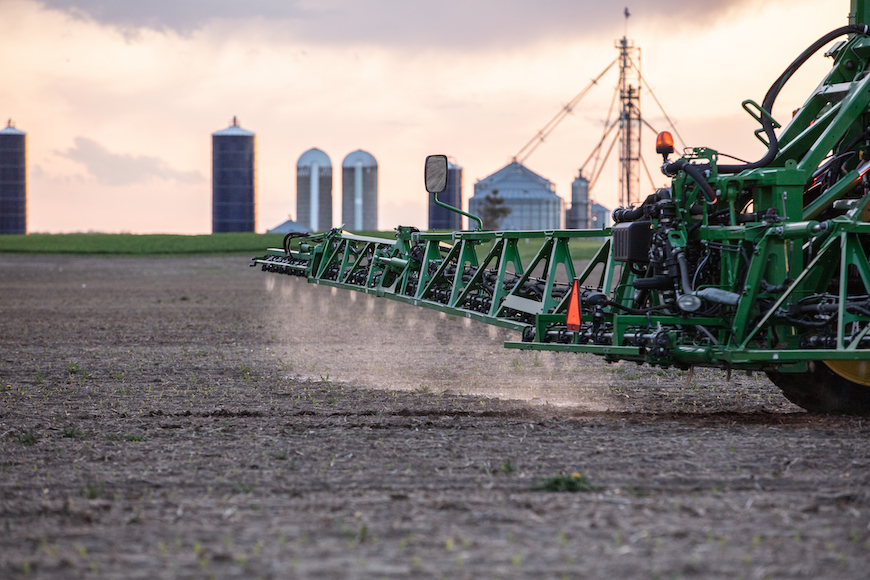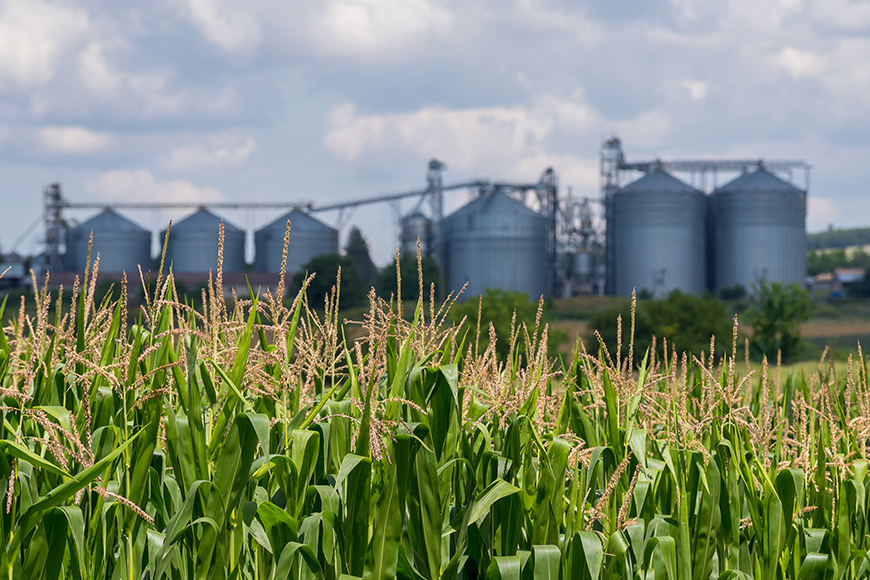5 Tips for Managing Early-Season Plant Stress
Mitch Larson
Market Development Agronomist

Planting is just around the corner. Every decision you make, including your seed purchase and the ground conditions you place it in, can affect the number on the yield monitor at harvest. When seeds start in cold, wet soils, it can lead to early-season plant stress that can impact the rest of the season. While not all plant stresses can be eliminated, several management practices can help mitigate them.
Keep these five considerations in mind as you finalize your spring planting and management plans:
1. Wait For Optimal Soil Conditions
It’s easy to feel anxious during the first warm days of spring. You may be tempted to plant early when the soil is close but not quite ready. However, planting in poor soil conditions is more likely to create problems for the rest of the season.Iowa State University reports corn may take three weeks to emerge when soil temperatures average 50 to 55 degrees Fahrenheit at the time of planting, compared to 10- to 12-day emergence when soils average 60 degrees Fahrenheit. Plants that emerge quickly are less susceptible to early season root and fungal diseases and insect damage, and they are more likely to have even stands across rows.
Equally important to soil temperature is soil moisture. Planting when the soil is too wet can cause compaction, smear the sidewall of the seed trench, restrict root development and even cause the seed to rot and die. However, if the field is too dry, germination can slow or stop. In this case, try increasing planting depth to reach more moisture. In addition to the presence of moisture, be sure to evaluate its consistency. If moisture is not spatially consistent at seed depth, uneven germination, and therefore uneven emergence, can occur.
2. Fine-Tune Seed Placement, Management Plans and Planting Equipment
While you’re evaluating emergence and vigor scores, make sure you work with your trusted CROPLAN® advisor to review your seed’s response-to scores, which measure how a selected hybrid or variety will respond to variables like planting population, nitrogen use and fungicide applications. For example, some hybrids like CROPLAN’s CP4024SSPRO respond more favorably to higher planting populations. Others, including CP4652SSPRO, don’t require as high of populations for optimal performance. If your planter is capable, also consider using RTP scores to develop variable rate planting prescriptions to deliver the optimal seeding population for every acre.
Always ensure your planter is set to the proper planting depth and make a habit of verifying performance at least once per field. Ensuring the right planting depth, evaluating the quality of your furrow and minimizing the impact of excessive crop residue can help achieve even emergence and set seedlings up for success.
3. Consider the Value of Seed Treatment
Due to earlier planting dates, we continue to see an increase in disease pressure from Pythium, Rhizoctonia, Fusarium and Phytophthora, which can be detrimental to the plant’s health and yield potential. A quality seed treatment can help mitigate these early-season stresses.
For soybeans, Warden® CX II seed treatment fights early-season diseases and resistant Pythium strains with four powerful modes of action. With the unknowns of spring weather, it pays to protect your seed investment from the threats of insects and diseases.
While seed treatment on corn hybrids comes standard from all seed companies, not all seed treatments are created equal. Seed treatments like Fortivent® Plus provide control of Pythium and insects and aid in early-season plant growth and root development with the inclusion of zinc. Answer Plot® trial data shows that seed treated with Fortivent Plus yields 4.7 bu/A more than untreated seed.1 Luckily, if you’re planting a CROPLAN hybrid, your seed purchase comes standard with Fortivent Plus seed treatment to help protect your investment.
4. Give Plants a Jumpstart to the Season
Starter fertilizers applied at planting in corn can help increase nutrient availability, leading to improved early-season growth for developing plants. Nutrients including phosphorus and zinc, which tend to be more limited when soils are wet and cool, are found in many starter fertilizers and are vital to early plant growth. If your starter fertilizer doesn’t contain zinc, consider adding a chelated zinc like Ultra-Che® Zinc 9% EDTA micronutrient to round out your starter nutrient plans.
In addition to starter fertilizer, a plant growth regulator (PGR) can help give your germinating seeds the extra jumpstart they need to speed up the germination process. Including Ascend® ST3™ PGR as a seed treatment for soybeans or using Ascend2® PGR in-furrow in corn can help accelerate germination and emergence, boost seedling development and root growth and maximize yield potential in early season conditions. This becomes especially important when planting in cool, wet soils.
5. Remember to Scout Your Fields
As plants are emerging, be sure to scout fields early and often, taking population stand counts and observing spacing and growth stage differences between plants. Understanding the quality of a stand can help set expectations and drive management decisions for the rest of the growing season
The first steps you take this spring will affect crop growth and development throughout the season. Talk with your local CROPLAN retailer about how you can give your crop a strong start.
All photos are either the property of WinField United or used with permission.
© 2025 WinField United. Important: Before use always read and follow label instructions. Crop performance is dependent on several factors many of which are beyond the control of WinField United, including without limitation, soil type, pest pressures, agronomic practices and weather conditions. Growers are encouraged to consider data from multiple locations, over multiple years and to be mindful of how such agronomic conditions could impact results. Answer Plot, Ascend ST3, Ascend2, CROPLAN, Fortivent, Ultra-Che, Warden and WinField are trademarks of WinField United. All other trademarks are the property of their respective owners.
IF YOU LOVE OUR INSIGHT, YOU’LL LOVE OUR ROI POTENTIAL
Every successful harvest starts with a seed. It just can't end there. Choose which high-performing seed products you’ll start with this season.






